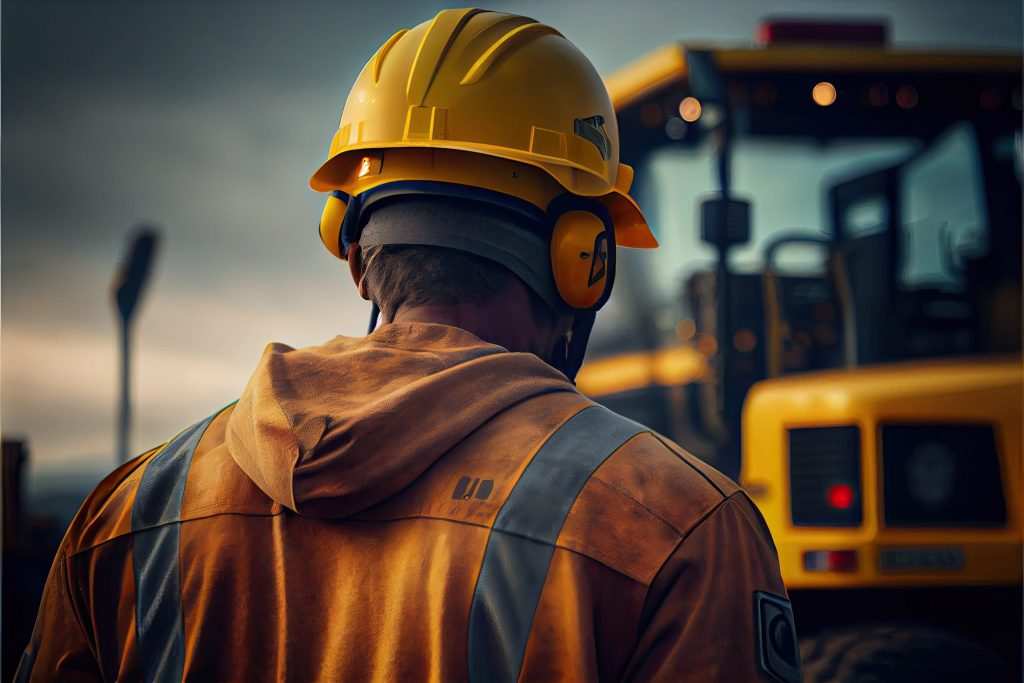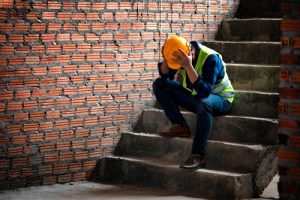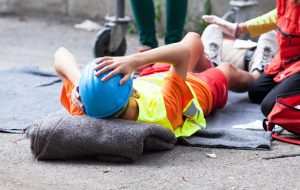Around two million people work in the construction industry. The average rate of fatal injuries in the UK between 2021 and 2022 was 1.63 per 100,000. More than double the rate for manufacturing workers.
The 4 Most Common Injuries Occurring On Construction Sites
Tripping, Slipping & Falling
We have all seen construction sites, the potholes made by heavy machinery, made worse by the UK weather. Cables and lines left lying loose, and building equipment is left unattended. All of these plus more – are hazards to anyone coming onto or working on the site.
Falling From Height
This hazard can be in two forms, someone falling from a height and something falling on someone. Both are equally as hazardous. Falls from ladders are common and can cause various levels of injury. However, falling from scaffolding is potentially fatal.
Additionally, objects falling from a height can occur due to human error or poor safety site management. Ensuring adequate storage, how to secure items at height, and appropriate PPE equipment available and worn can help to avoid these accidents.
Electric Shock
You can see a multitude of electrical equipment on construction sites. If faulty or wrongly handled, this equipment can cause electric shock injuries ranging from burns to death. Only qualified staff should handle electrical equipment. Regular inspection and maintenance will also go a long way in reducing these types of accidents.
Vehicle Accidents
Accidents involving vehicles are, unfortunately, a common occurrence on construction sites where the traffic movement is constant.
To prevent these accidents from occurring, implement a site-specific traffic management plan, including;
- Separating pedestrians’ walkways from the traffic routes
- Turning circles to prevent reversing accidents and having
- Clear instructions on traffic flow can stop these accidents from occurring
Is Your Construction Site Safe?
Due to the nature of the job, there is a need for knowledge and application of safety rules and regulations to protect yourself, workers, visitors and the site.
The Basic Elements Of Construction Site Safety
Proper site training
- Lifting precautions
- Ladder safety
- No crowding within the perimeter of the site
- Keeping the work area clean
Safety programs - Risk management systems
- Personal Protective Equipment PPE
- Follow environmental guidelines
While the majority of responsibility for site safety is with management or company owners, workers need to take responsibility for their own work area. Taking the safety of yourself and others seriously on the site involves learning the danger areas and what to do and not do to facilitate good safety practices.
Before starting work on a site, ensure that safety procedures are in operation and that the site offers in-house recognised training or training by outside experts like CPN Training. At CPN, Training we provide on- or off-site health & Safety training alongside first aid courses. You can also take an accredited NPORS construction and safety awareness course. This course will give you the skills to recognise potential hazards and practical advice on your own and others’ safety.
To be safe, it makes sense to learn to be observant, responsible and able to react wherever you are on a construction site to prevent your and others’ safety from being compromised.
For more information or any guidance, please contact us today.












